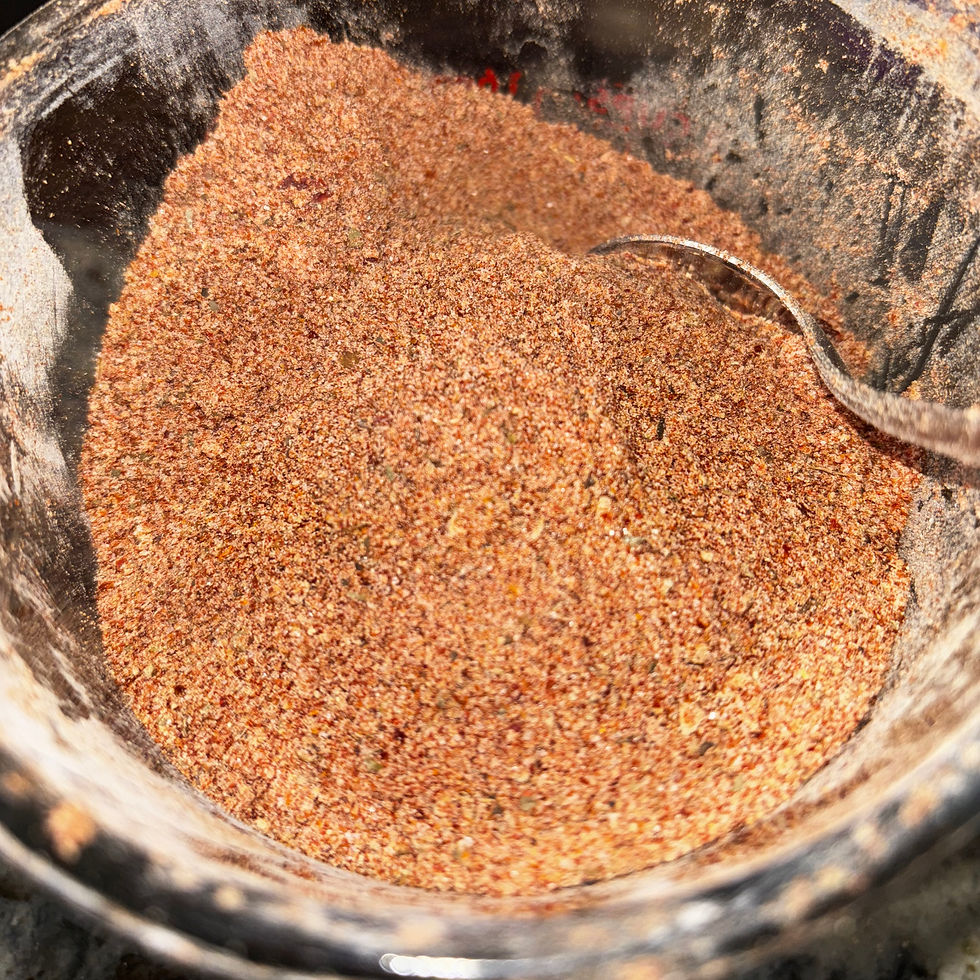Meals in a jar Mastery: Selecting the Best Ingredients—Dehydrated or Freeze-Dried?
- goshenacres
- Jul 2, 2024
- 3 min read
When sharing recipes for meals in jars, I often receive questions about whether dehydrated ingredients can be used interchangeably with freeze-dried. It's a great question, and the answer is both YES and NO—let me explain.
When I first starting down the path of creating meals in jars, I realized that before I could start creating, I needed a variety of ingredients. So, I embarked on a mission to dehydrate a plethora of extra produce from the garden which would give me a dehydrated pantry of ingredients to play with. It was a process that took time, from growing and nurturing to harvesting, prepping, and dehydrating. I spent an entire summer dehydrating whatever I could to build up a broad selection and quantity.
Dehydrating takes a long time to build up a quantity because the size of the ingredients shrivels so much in the process. You can put many more servings, comparing original weight of broccoli in one jar compared to its counterpart, freeze dried, which holds its shape and size. This is one of the biggest differences. The picture below shows the contrast between freeze dried and dehydrated broccoli.

Once I had a basic variety of dehydrated ingredients on hand, I began experimenting with different recipes. What I discovered was that dehydrated ingredients couldn't always be used interchangeably, especially for many of the "instant or minimal" cooking meals. There are a couple of reasons for this.
The main one is that dehydrated ingredients take significantly longer to rehydrate and cook. In the meantime, they remain chewy and hard, which doesn't quite fit the bill for the quick or instant meals. These are the kinds of meals you whip up when you're short on time or need something nutritious and fast—like when it's dinner time, and you forgot to thaw something from the freezer, or you're eating on the go.
Dehydrated veggies also shrink a lot during the dehydration process and don't rehydrate to their original form. This isn't a big deal for many options, but in recipes, it can throw off your overall veggie content. Dehydrated veggies won't take up the same volume as freeze-dried, so half a cup of dehydrated broccoli won't be equal to half a cup of freeze-dried broccoli, making your final dish look like it's lacking in volume. If time isn't an issue, then dehydrated ingredients can work well for certain recipes. I like to use them for soups or recipes with a long simmer time. Additionally, I've found that dehydrated shredded veggies work great for baking, such as zucchini or carrots, and they rehydrate easily.
In conclusion, while both dehydrated and freeze-dried ingredients have their place in the kitchen, understanding their differences is key to creating successful meals in jars. Dehydrated ingredients are fantastic for long-cooking recipes, like soups or even baking. This is a great way to preserve garden produce for use year-round. However, for quick, instant or emergency and convenient meals where time is of the essence, freeze-dried ingredients are the better choice due to their rapid rehydration and consistent texture. By choosing the right type of ingredient for your specific needs, you can ensure that your meals in jars are both delicious and convenient, whether you're preparing a fast weeknight dinner or a slow-simmering stew. Happy cooking!
For more information on creating your own long-term and working pantry, check out my other blogs or sign up for my newsletter, which focuses on meal-in-a-jar recipes, tips, and Thrive Life food updates. To order freeze-dried ingredients, visit my direct link at goshen.thrivelife.com. I would love to have you join me! Plus, anyone who signs up and places an order will receive my Meals in Jars book for FREE!



Comments